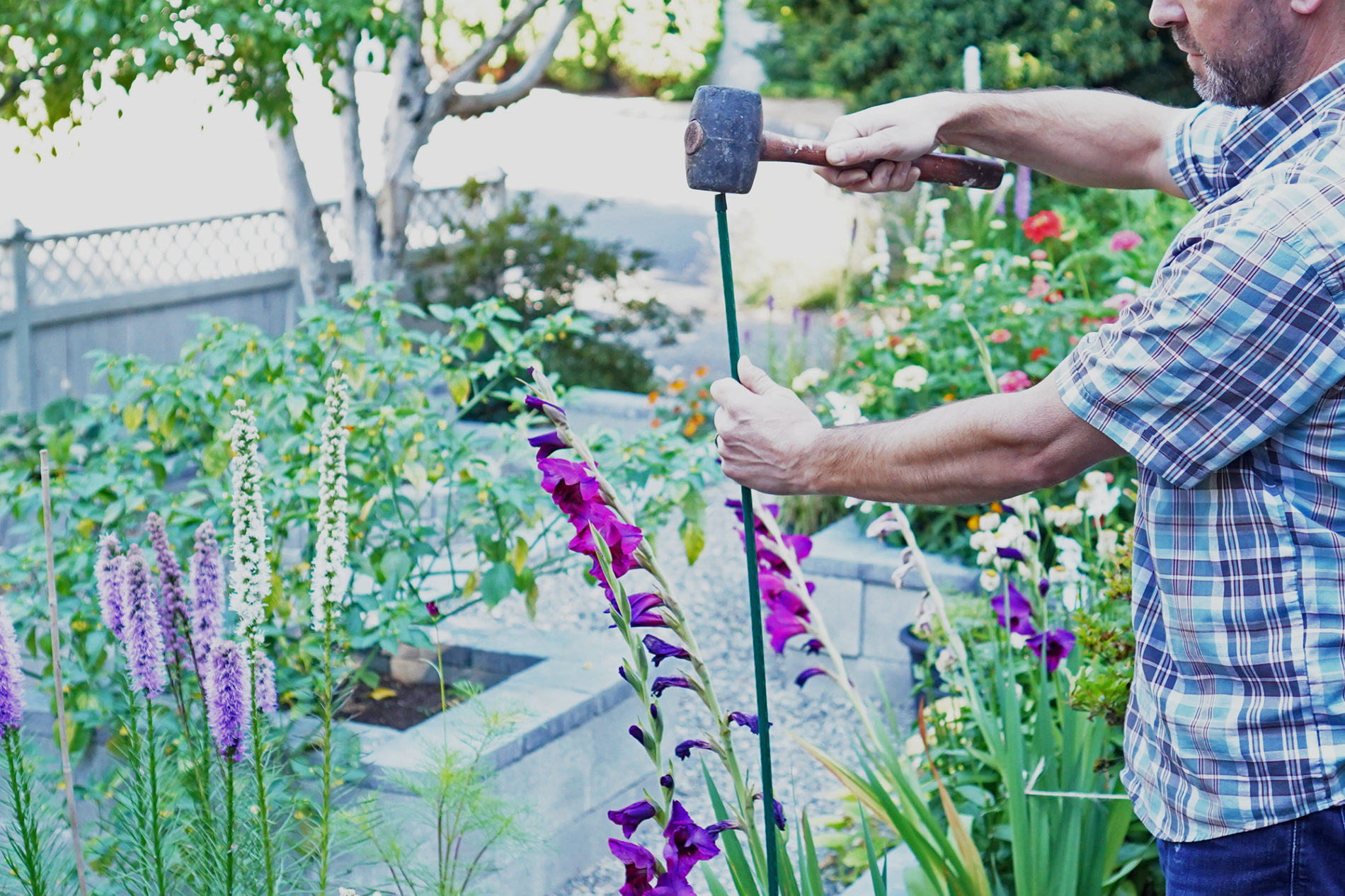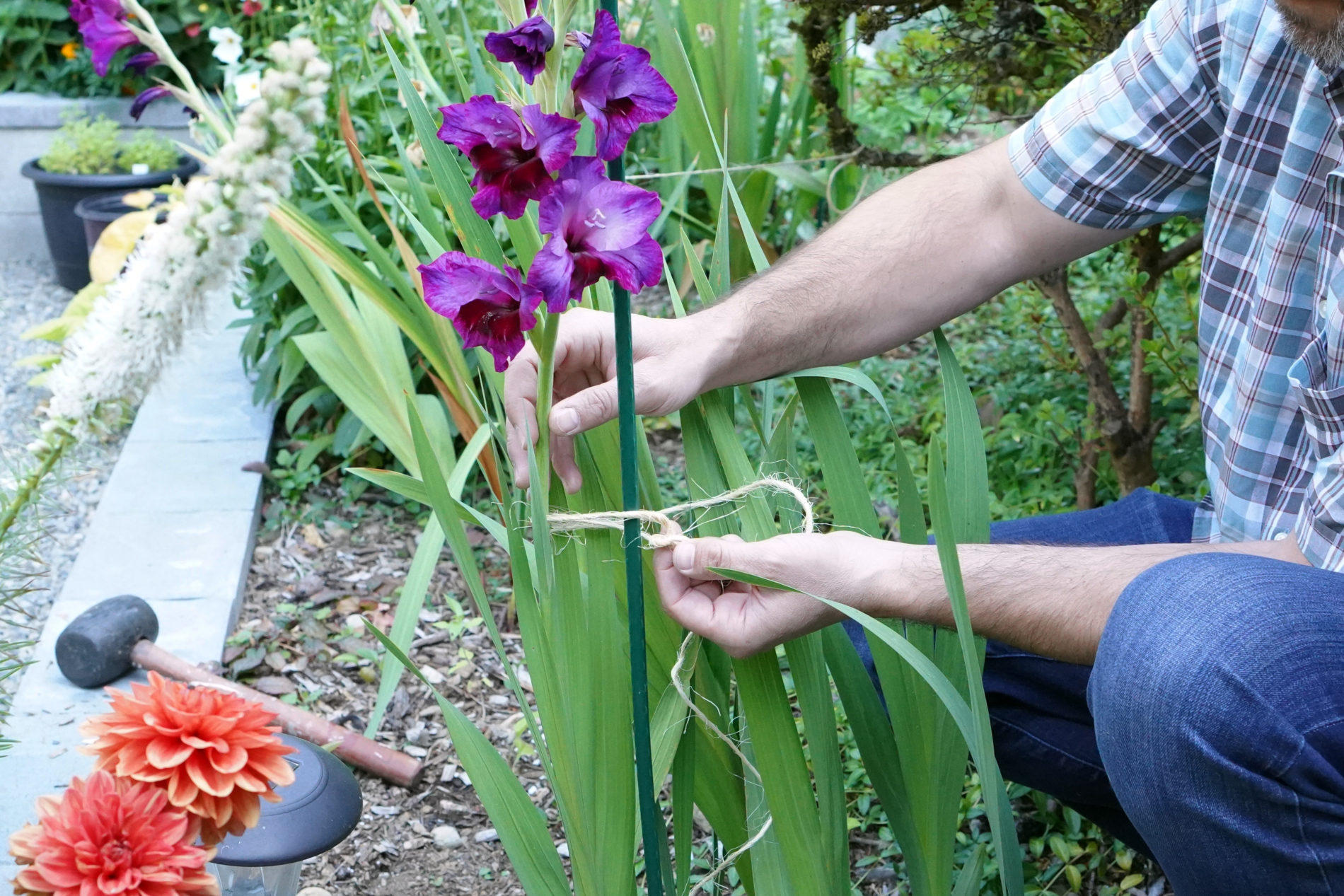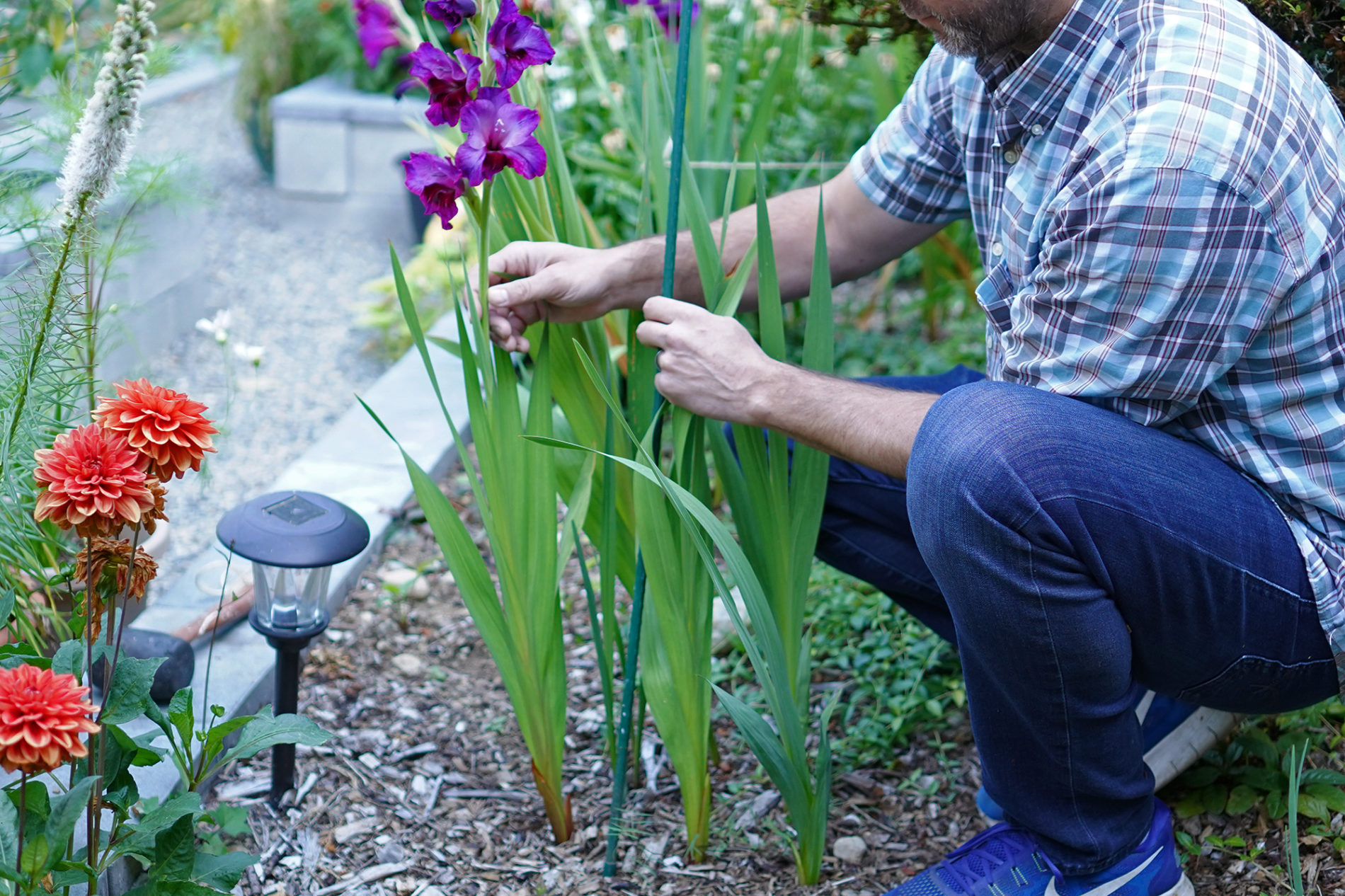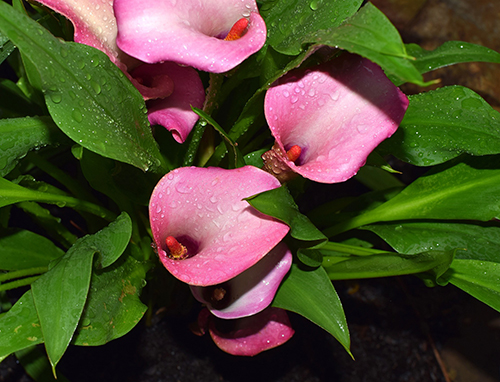Staking gladiolus plants doesn’t have to be difficult. We’ll show you how it’s done in 5 easy steps.
Gladioli are beautiful, summer-blooming bulbs that keep growing and growing and growing. One tall stem can produce upwards of 12 or more flowers on it and as you can imagine, it gets very heavy. If you’re not planning on cutting the stem for a bouquet, it will quickly topple over which could potentially snap the stem.
Let’s fix that, shall we?
If you want to watch how to stake tall flowers, watch this video! You can apply the same techniques in this video to staking your gladiolus plants.

Tools and Supplies You’ll Need
- Rubber Mallet by Estwing
- Cotton Garden-Safe Twine by Librett Durables
- Metal Scissors by Wolff Ergonomix
- Green Metal 4 ft Stakes by Mr. Garden
Steps to Stake Your Gladiolus (so they don’t fall over)
Step 1:
Gather your supplies, including: a stake (bamboo, metal, wood, etc), some twine, string, or velcro, a rubber mallet, and a pair of scissors.
Step 2:
Carefully grab the top-heavy stem in question and raise or straighten it so you can figure out how to place the stake the best way (which is the next step).
Step 3:
Locate the best, safest spot for the stake. This can be a bit tricky because you want to avoid hurting the actual bulb, or any surrounding plant roots. Once you spot a location that is far enough away from the plant stem but close enough to brace the stem the way you want it to, you are golden. This is where you need to place your stake.
Step 4:

Carefully pound the stake into your chosen spot using your rubber mallet.
Step 5:

Carefully straighten the stem and get ready to loosely tie it to the stake. Before you tie it, be careful not to harm any plant material, such as the leaves or flowers, or the stem. Find a spot directly on the stem, preferably above or below a leaf node, which is safe for tying. Tie a loose loop (like tying your shoelaces) with your twine or string (or attach your velcro). Avoid tying a knot because you may need to adjust this in the future.
If you want to learn more about gladiolus, check out our “Gladiolus Plant Chat” video below (because we love them and love talking about them!).
Conclusion
As you learned above, with just a few supplies, you can protect your tall, gladiolus flowers and prevent them from toppling over. That way, you can enjoy their beautiful, vibrant blooms for as long as they last.
Now, we want to hear from you!
What other questions do you have about staking gladiolus that we didn’t answer above? Let us know by leaving a quick comment below. Thanks!
Want to learn about other plants in your garden? Check out some of our plant profiles:
- Daffodils: A Gardener’s Guide and Plant Profile
- Shasta Daisy: A Gardener’s Guide and Plant Profile
- Crocosmia: A Gardener’s Guide and Plant Profile
- Primroses: A Gardener’s Guide and Plant Profile
- Tulips: A Gardener’s Guide and Plant Profile
- Grape Hyacinth: A Gardener’s Guide and Plant Profile
- Winter Pansies: A Gardener’s Guide and Plant Profile
See you in the garden!
~ Sean and Allison
P.S. Follow us on YouTube, Pinterest, Twitter, Facebook, and Instagram so you don’t miss a thing!





